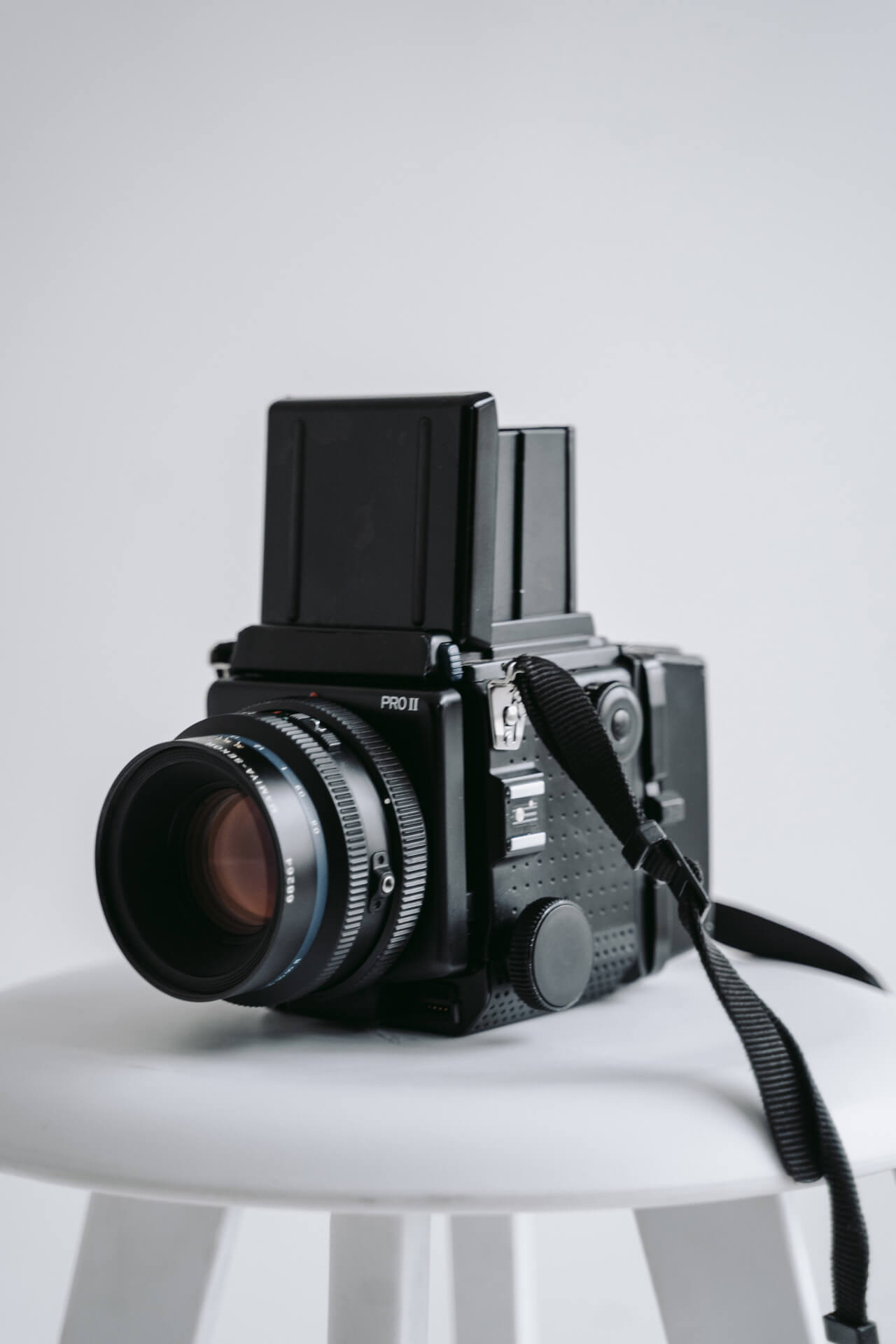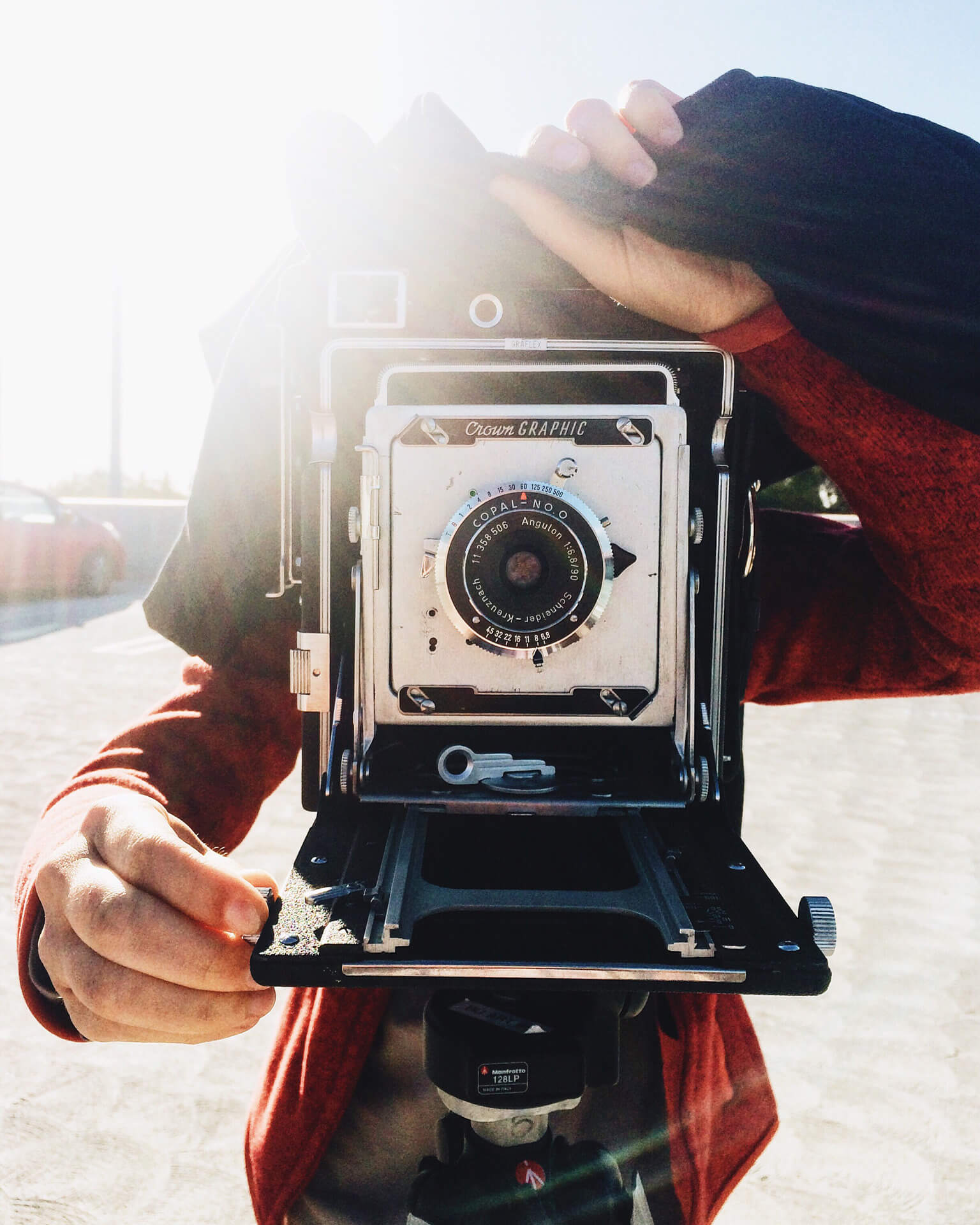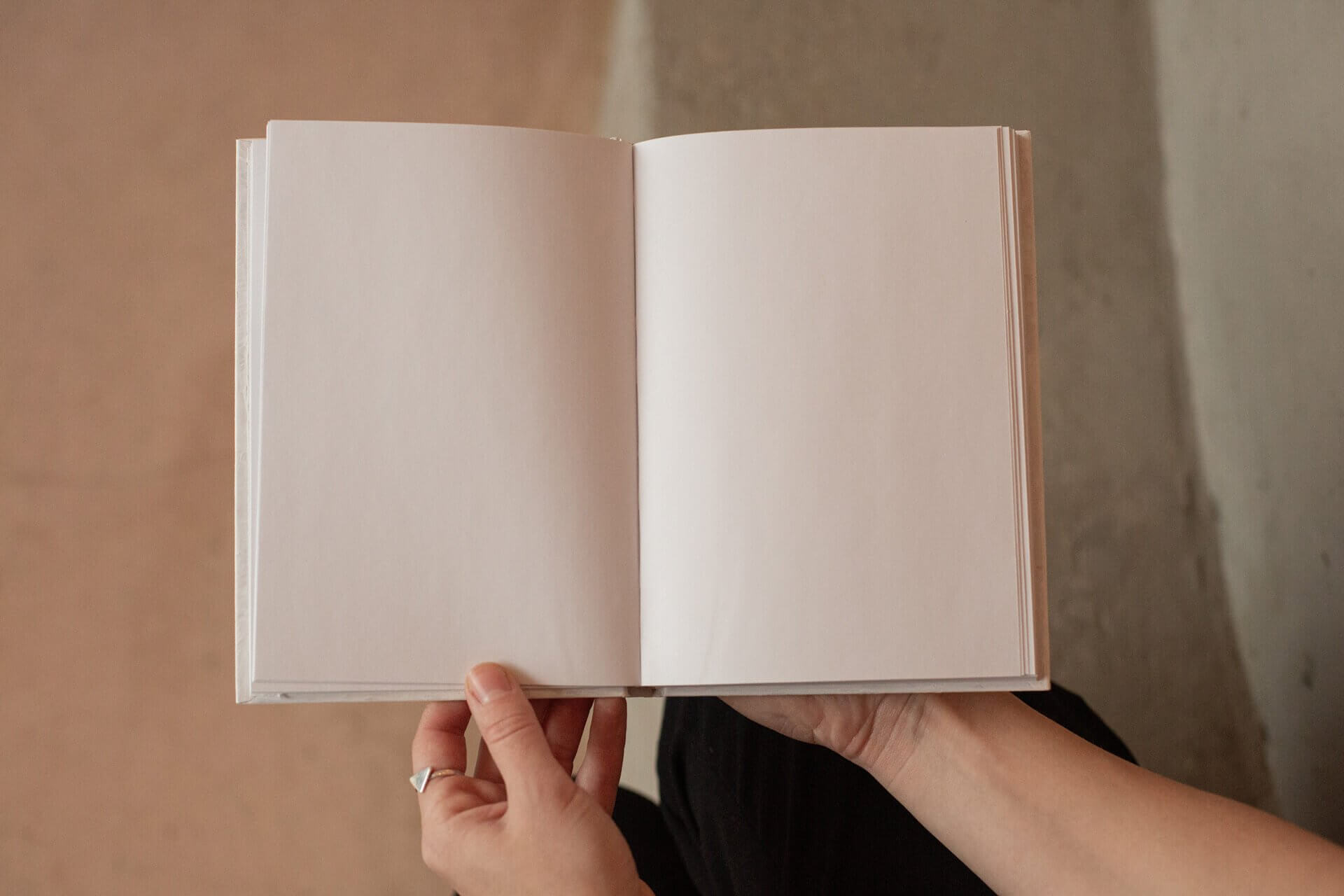Over time, there have been many film formats. A film’s format refers to the size of the film. Most formats have been discontinued, but there are three that remain popular choices today: 35mm, medium format, and large format. Each format has a different set of compatible cameras and will impact your image results. Let’s explore the current format options.
35mm
35mm, or 135 film, is the most common format on the market and the most familiar. The film comes in a small canister that fits into all 35mm film cameras. Depending on the film stock, you can expect 24 or 36 exposures per roll.
This format is generally the best when first getting started in film photography. 35mm film cameras can still be found for relatively cheap in most cases, and the film costs less per roll than the bigger formats. This makes it the most economical format per shot. Because 35mm is the most popular, there is also a broader selection of film stocks to choose from.
Medium Format
When medium format, or 120 film, was first introduced back in 1901, it was marketed to amateur photographers and consumers for snapshots. 35mm film was introduced decades later and quickly became the popular format of choice for beginners. As a result, medium format shifted to be the preferred format for professionals, which it still is today due to its higher quality images while remaining easily portable. Medium format is a happy middle ground between 35mm and large format.
Medium format is larger in size than 35mm, allowing the image to capture more detail and a wider range of colors with less grain. 120 film comes rolled on a spool and is 6cm wide. Different types of medium format cameras have various frame sizes. The sizes available are 6×4.5, 6×6, 6×7, and a panoramic 6×17. The specific frame size of your camera will determine how many exposures you can get from a single roll of 120 film. A 6×4.5 camera will give you 16 frames, while a 6×6 gives 12, 6×7 gives 10, 6×9 gives 8, and 6×17 usually gets 3.
Large Format
Large format, also known as sheet film, is the oldest format still available today. This film comes in individual sheets instead of rolls; the most popular sizes are 4×5 and 8×10. Unlike 135 film, which is measured in millimeters, and 120 film, which is measured in centimeters, large format frames are sized in inches. Large format is often reserved for advanced professionals due to its cost and complexity.
The size of film you need will depend on the size of your camera. The most common size for large format cameras these days is the 4×5. Large format produces the highest quality images. Because of the size of the image, you are able to get a much sharper image with a greater level of detail and much smaller grain than with the smaller formats. For comparison, a large format frame is about 15 times bigger than that of a 35mm.
Each format comes with benefits and challenges. 35mm is more beginner friendly, while large format can be daunting even for experienced film photographers. Regardless, you can take amazing photos with any camera or format. Pick up a camera and some film and see which format speaks to you.
Want to learn more about film photography? Check out our Education section for more articles, and subscribe to our newsletter to stay up to date with new releases.











